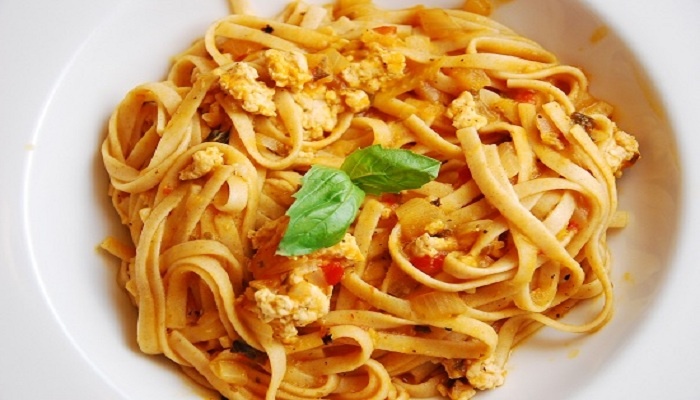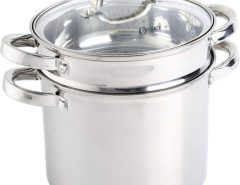As not everyone is familiar with the differences between fusilli, fettuccine, and farfalle, many people have come across a dish of spaghetti Bolognese or maybe enjoyed a plate full of lasagna. In some British occupied homesteads, spaghetti has been a standard feature during dining times as early as the 1960s. It turns out to be a staple when it comes to children meals tuna-pasta-sweetcorn can be handy in maintaining students through their schooling years in cases where they board in school. A survey done globally has highlighted that pasta is the world’s most known dish ranked above the rice, pizza, and meat. Despite pasta being popular in many European countries, pasta was also one of the favorite dishes of the Guatemala, Brazil, South Africa and Philippines. Digits produced by International Pasta Organizations indicate Venezuela as the largest consumer of pasta followed closely by Italy. The top features the likes of Chile. Peru, and Tunisia. The survey also sheds some light on Argentinians, Mexicans, and Bolivians and the result shows that people from these countries consume more pasta than the British.
Pasta risen from the United States of America reflects figures ranging between 13 Billion dollars in the year 2003- 16 Billion dollars in the year 2010. The Data Monitor analysts predicted that this could rise to 19 Billion by the end of the year 2015. In the United Kingdom, prices of fresh and dry pasta amount up to 53 Million Euros in the year 1987. By the end of 2009, the figures reflected totaled 282 Million Euros. Including ready meals made out from pasta the value went up to an amount of 800 Million Euros, and research experts investigated this from Mintel.
Pasta came to fame due to some factors such as the fact that it is convenient, versatile and cheap. Sauce to that compliments the meal can be acquired from many ingredients. Pasta gives ample and comfortable time in bulk production and during transportation around the world.
Cultural Phenomena on Pasta usage

Technological advancement in the 19th century made it easy for pasta volume production, but it is best that Industrial Revolution did this for various products across the globe. Pasta became the world’s greatest known diet to humanity because people welcomed it, they liked both the food and they embraced the Italian way of life. Origin of pasta not including Italy has a global aspect since it could constitute from wheat and water products, and when baking, this tends to show that pasta has not yet boiled. Dumplings in ancient China turns to be a myth in today’s society as it tries to show how Marco Polo acquired pasta in 1295 and went to China with it. The Greeks and the Romans had food that mimicked pasta. The Arab invention in the 8th Century invented a noodle -like product that is dry to Sicily. Early pasta was manufactured from durum flour as this was a Sicily specialty. Under Italian governance, pasta came from only this type of wheat thus the bulk production of pasta from Italy. Although it was considered to be a second dish it turned out to that, preserving it for the rich was a norm from the very start.
Overrated Gloppy Stuff
The first reference that noted pasta in Italy was in 1154, and this was through an exporting factory in Sicily.
Pasta breakthrough discovery came in the year 1700 in Naples; as indeed a great way to serve and maintain a huge crowd. Pasta fame in areas outside Italy rose in the 20th Century came about due to high immigrants from Italy to the newly developed world, and this kept pasta in the limelight as -as Italy’s main dish. Outside Italy, there are 600 different shapes and types despite the spaghetti known outside Italy but every region in Italy cooks differently. Italians use of durum wheat with gluten consisting of a high -quality component made their pasta malleable thus the various sizes and shapes. Italians combined pasta with tomato sauce made from southern -Italy. Pre -industrial southern Italy was poor in the ancient times, and its popularity came due to its cheapness in nature of products.
Final thought: Pasta high rise was brought about by movement of poor Italians as they ventured for greener pastures and as they moved about they noticed that the people they came into contact with were in love with what they had to offer. An irony to pasta rise and how many people accepted it is that the immigrants from Italy who settled in places like Sardinia, The Amalfi Coast, and Sicily left behind things that attract tourists in these countries and cities. The super -rich in today’s society chooses such destinations to relax and enjoy the adverse meals that are offended in such places. It is no doubt that pasta that is an example of food for the poor turns out to be a meal that meets the wants and needs of various classes of life. Pasta can also be of great importance as students find it easy for their stay in schools as they can easily cook their desired meals made from the wide range of pasta products across the globe. It is evident that pasta is one the few cooked dishes that has a variety of different types of foods depending on an individual’s choice and preferences.
Pasta are cheap and easy to prepare as most of them can be made by boiling or baking in cases of special attention pasta can be cooked the same way an individual prepares rice in the kitchen.
The History of Pasta

An enormous presentation of theories in concern with the origin of pasta Researchers argues that Marco Polo introduced it in the XIII century. They claim he showed this meal when he returned to his Native land from his trip to China around the year 1271. Marco Polo’s reference to Pasta from the Chinese and contrary to his statements the history travels back Etruscan civilization during the ancient times and raises this concern.
During the Etruscan civilization, pasta was produced from several bowls of cereal grinned together with grains and then mixed with water. The blend that was later in the market was prepared using nutritious and tasty food products. During the finding of Naples by the Greeks, they acquired a culture for food habits from the natives. The meal consisted of pasta, barley flour, and water, as the water components were eliminated using heat from the sun. Pasta noted from the ancient Roman times date back to as far as 1000BC this is evident as Cicero talks about his passion for long pasta. During this period the Romans developed tools, procedures, and instruments for the production of lasagna from pasta. Inventions, in the end, promoted the use of cereals as they showed greater products for storage and transportation. The Roman dominion and expansion expanded the plantation of seeds across the Mediterranean as their great granary was in Sicily.
Cereals and wheat came from the Mediterranean areas of Africa and Lebanon. During Augustus rain of his empire, imports from Spain. Lebanon and Syria produced up to 400,000 tons of cereals. The guaranteed ratio that each inhabitant could receive depended on storage potential and this went in hand with the care of the goods to be stored.
Terms such as macaroni can be seen to be in some of the Roman writers from the beginning when humanities are known to have come. In the XIII Century, books from scholars and researchers tell that “cheese with macaroni were legacies from Naples and Genoas kitchen and the inhabitants ate this meal every day.” In many enriched broths, lasagna was a staple food eaten as pasta strips. In the book off The Culinary Art Lagan’s is mentioned by the writer and in this book from the XIII Century we see the preparation of the dish. Evidence indicate that pasta arrived in Naples from the Greeks. In the present history, the meal greatly accepted in countries such as Spain beginning as far as the XVI century during the Vice -royalty Spanish era in Naples. Fresh pasta was taken and used in Italy from the ancient times of the Romans and the Etruscan.
As days changed and more inventions held various names come to rise in references to pasta. Pasta producers were termed as lasagna while the pasta production was known as lasagna. At some point, the name was said to be Fidel lithe vermicelli.Pasta, in this case, was cylindrical in shape and had a thread -like physical state, and this made the producers to name as Fidel lai. During the beginning of XVII century, firms were born in Naples. Inventions promote some degree of perfection in the manufacturing phases. In Gragnano a rise in precision for preserving and drying pasta begins, a few miles from the city of Partner. The increase of businesses in this region due to its climate promoted by dry-Ponentino winds and humid-Vesuvian winds. The temperatures elevated conditions ample for the production processes of pasta. The invention of press and kneading equipment’s made it easy to manufacture pasta on low price, and this made it possible for the pasta to become a favorite dish among the people. During 1740 in Venice, Adami was licensed to put up the first factory to produce pasta. During the XIX century, a refined cooking sparks in most of the menus among the nobles and the large end production of pasta develops. Feeding on pasta became a gastronomic trend among those with a higher class in the society and during this period pasta meals spread like bush fire in Italy’s Society.





Leave a Reply